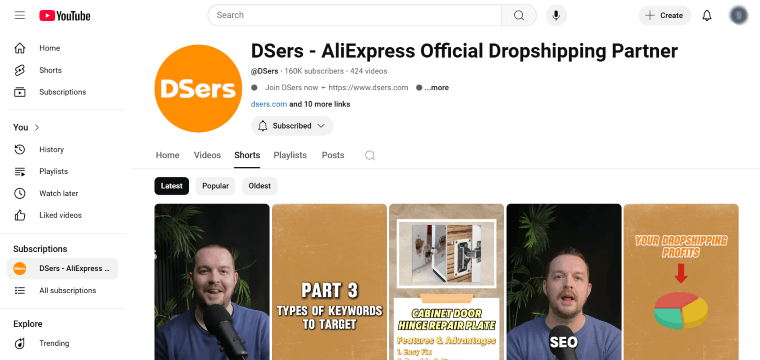TikTok Ban: When It Will Happen and How to Handle the Ban

Since its launch, TikTok has captivated millions, particularly Gen Z, with its short-form videos, viral challenges, and addictive scrolling features. However, as TikTok's popularity skyrocketed, so did concerns regarding privacy, national security, and data management, leading some countries to consider banning the app. Despite efforts to quell these concerns, the question remains: when will TikTok be banned, and how should businesses, influencers, and users respond to such a ban?
In this article, we will explore the potential TikTok ban, and its impact on users and businesses, and provide alternatives to both social media platforms and selling platforms.
When TikTok Will Be Banned
As of now, TikTok has faced scrutiny from various governments worldwide, particularly in the United States and India. While there have been discussions about banning the app, no official blanket ban has been enacted—yet. However, the concerns around TikTok, particularly regarding privacy, national security, and data privacy laws, continue to intensify.
Why Is a Ban Being Considered
There are several reasons why governments have raised alarms about TikTok:
Data Privacy
TikTok collects significant amounts of user data, including location, browsing behavior, and device information. The Chinese parent company, ByteDance, has been accused of possibly sharing this data with the Chinese government under China's strict data laws.
National Security
Some argue that TikTok could be used as a tool for influence, surveillance, or disinformation. This is particularly concerning for countries like the U.S., where TikTok's large user base could be susceptible to manipulated content or propaganda.
Geopolitical Tensions
As part of the ongoing tech rivalry between the U.S. and China, TikTok has been caught in the crossfire. Countries like India have already taken action, banning the app, citing similar concerns.
Despite the ongoing debate, a complete TikTok ban is not inevitable, but if it happens, the impact could be severe—particularly for businesses and content creators (be called 'TikTok refufees' if the ban happens) who rely on TikTok as a primary platform for marketing, influencer collaborations, and audience engagement.

Impacts of the TikTok Ban
If TikTok were to be banned, the fallout could be felt in several ways:
Loss of Audience
Content creators and businesses that have built significant followings on TikTok could face a massive loss of audience and engagement. TikTok’s algorithm allows users to reach vast numbers of people, making it a powerful tool for growing personal brands and businesses.
Ad Revenue Losses
For influencers, small businesses, and advertisers who rely on TikTok’s advertising features, the platform's loss could significantly reduce revenue opportunities.
Disruption to Business Models
Many businesses use TikTok for product launches, brand awareness, and direct sales, particularly for targeting younger consumers. A ban would force these businesses to pivot to other platforms, which may not provide the same level of engagement.
Brand Image and Customer Trust
If TikTok is banned due to national security concerns or privacy issues, businesses that heavily rely on it could also experience a loss of customer trust, especially in regions where the ban could be seen as politically motivated.
Alternatives to Social Media Platforms
If TikTok were banned, businesses, influencers, and content creators would need to pivot to other platforms to maintain their audience engagement. Fortunately, there are several alternatives that can offer similar features for content creation, social sharing, and viral marketing.
1. Xiaohongshu (Little Red Book)
Xiaohongshu, or "Little Red Book," is a Chinese social media and e-commerce platform that blends lifestyle content with online shopping. It’s similar to Instagram in many ways but focuses more on reviews, experiences, and recommendations. Users can post product reviews, photos, and videos, often linked to direct purchases.

Why It’s an Alternative: Xiaohongshu is a great platform for engaging an audience interested in lifestyle, beauty, and e-commerce content. Its user base is younger, similar to TikTok's demographic. For businesses and influencers, Xiaohongshu offers a unique opportunity to create content that blends advertising with authentic user experiences.
2. Douyin (The Chinese Version of TikTok)
Douyin, also owned by ByteDance, is essentially the Chinese version of TikTok. While it operates under similar principles, Douyin is more focused on the Chinese market. However, it is a popular alternative for brands looking to expand into China.
Why It’s an Alternative: If you already have a TikTok following and are familiar with its format, Douyin provides a seamless transition for those looking to stay within the ByteDance ecosystem. Douyin offers advanced video-editing features and a vast user base, making it a great platform for viral marketing.
3. Instagram Reels
Instagram has introduced Reels, its own short-form video feature, in an effort to compete with TikTok. Reels allows users to create, edit, and share 15 to 60-second videos, with similar features like music, effects, and filters.
Why It’s an Alternative: Instagram has a massive global user base, which makes it a solid alternative for those looking to maintain visibility. Additionally, Instagram already supports other forms of content, such as photos, Stories, and IGTV, making it a versatile platform for content creators.
4. YouTube Shorts
YouTube Shorts is another short-form video feature designed to compete with TikTok. YouTube Shorts allows creators to post videos up to 60 seconds in length, making it a great way for influencers and businesses to engage with their audience.

Why It’s an Alternative: YouTube has a massive global user base, and with Shorts, creators can tap into that while maintaining all the features YouTube offers, including monetization options. Businesses and creators can integrate YouTube Shorts into their content strategy to continue building their audience.
5. Snapchat Spotlight
Snapchat has introduced Spotlight, a platform for user-generated content similar to TikTok. Spotlight is focused on short-form videos, and creators can earn money based on the engagement their videos receive.
Why It’s an Alternative: Snapchat offers a more niche, yet highly engaged, audience. The platform has continued to innovate and has tools similar to TikTok, such as filters and effects. Brands and content creators can take advantage of Snapchat’s creative tools and monetization options to reach younger audiences.
Alternatives to Selling Platforms
If TikTok is banned, businesses need to have backup plans for selling their products online. Fortunately, several alternative selling platforms offer powerful tools and capabilities for e-commerce.

|
Manage Multiple Stores In One Account Multiple Stores Management - Link and manage multiple stores on different platforms in one place |
1. Facebook Marketplace
Facebook Marketplace is one of the most widely used online selling platforms globally. With over 2.8 billion active monthly users, Facebook Marketplace provides businesses the opportunity to reach a broad audience and sell products locally or internationally.
Why It’s an Alternative: Facebook Marketplace allows businesses to list items directly in the Facebook ecosystem, making it highly accessible to existing Facebook users. This platform also integrates with Facebook Ads, allowing sellers to target specific demographics and interests with ads that lead directly to their Marketplace listings.
Want to learn how to start dropshipping fees with Facebook marketplace, read the guide here:

2. Instagram Shopping
Instagram has seamlessly integrated e-commerce with social media through its Instagram Shopping feature, which allows users to shop directly from posts, Stories, and even Live videos.
Why It’s an Alternative: With over one billion monthly active users, Instagram has a highly engaged audience and offers a natural way to create visual, shareable content that can directly lead to purchases. Instagram Shopping enables users to click on a product in a post or story and be redirected to the checkout page without ever leaving the app, making the buying process frictionless.
3. Shopify
Shopify is one of the most popular e-commerce platforms, allowing businesses to create fully customizable online stores. Shopify is known for its ease of use, scalability, and integration with numerous payment gateways, making it an excellent option for both small businesses and large enterprises.
Why It’s an Alternative: Shopify provides full control over your branding, inventory management, and sales strategy. It’s a robust platform for businesses looking to set up a dedicated online store that can be customized to fit their needs. With Shopify, you don’t have to rely on third-party platforms like TikTok, Instagram, or Facebook for your sales—everything happens within your own branded storefront.
4. Amazon
As one of the largest and most popular e-commerce platforms in the world, Amazon offers businesses the ability to sell products to millions of consumers globally. While Amazon is highly competitive, it offers businesses the opportunity to reach an unparalleled audience and take advantage of its vast infrastructure for logistics and fulfillment.

|
Place Orders to AliExpress In Seconds DSers Bulk Order - Place 100s of orders to AliExpress in a few seconds with a just few clicks |
Why It’s an Alternative: Amazon is a trusted brand, and consumers are often willing to purchase products from the platform because of its convenience, fast shipping, and customer service. For businesses, Amazon offers a large marketplace with access to millions of buyers.
5. Walmart Marketplace
Walmart is another massive player in the e-commerce world and offers a competitive alternative for businesses looking to expand their online presence. With over 120 million unique visitors per month, Walmart Marketplace allows businesses to sell products alongside Walmart's retail offerings, reaching an established and loyal customer base.
If you want to learn how to dropship on Walmart, check the guide here:

Why It’s an Alternative: Walmart is a household name and has an established reputation for quality and low prices. By listing products on Walmart Marketplace, businesses can tap into Walmart's vast consumer base, and benefit from the credibility and trust Walmart has built over decades.
What Else You Can Try to Deal With the Ban
While migrating to alternative platforms is important, there are other strategies you can use to minimize the impact of a potential TikTok ban on your business.
1. Diversify Your Marketing Channels
Don’t put all your eggs in one basket. Ensure that your business uses multiple marketing channels such as email marketing, SEO, paid ads, and content marketing to generate leads and sales. Building an email list allows you to communicate directly with your customers, regardless of platform changes.
2. Apply Email and Content Marketing
Email marketing is a powerful tool for staying in touch with your audience. By building a strong email list, you can continue promoting products, launching new campaigns, and keeping customers engaged without relying solely on social media platforms.
Content marketing can also be a great way to attract and retain customers. Blogs, podcasts, and webinars provide valuable content that can strengthen your brand’s authority and keep customers engaged.
3. Adjust Your Advertising Strategy
In the face of uncertainty, explore various advertising platforms and diversify your advertising strategy. Facebook, Google Ads, and YouTube offer robust targeting options to reach your audience, even if TikTok is no longer available.
Final Thoughts
Although the potential for a TikTok ban is a real concern for businesses and influencers, it is not a certainty. However, brands must prepare for the possibility and take steps to diversify their marketing efforts. By embracing alternative platforms, adjusting your content strategy, and relying on multiple marketing channels, you can weather the storm and continue to thrive in a post-TikTok world.
Stay adaptable, and your business will remain resilient in the ever-evolving digital landscape.













 Company
Company
 Why Choose DSers
Why Choose DSers
 Blog
Blog
 Help Center
Help Center




 Live Chat
Live Chat